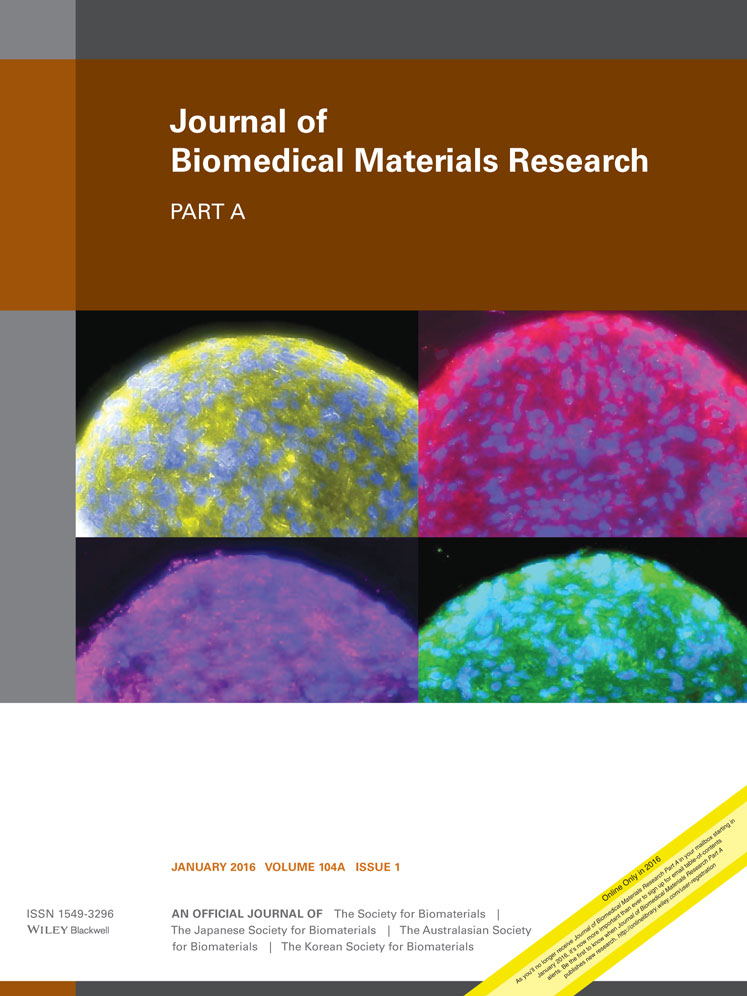Dual biofunctional polymer modifications to address endothelialization and smooth muscle cell integration of ePTFE vascular grafts
Abstract
Expanded polytetrafluoroethylene (ePTFE) grafts were coated on the luminal surface with a cell-adhesive fluorosurfactant (FSP) polymer to promote endothelialization, followed by ethanol hydration to degas the pores and subsequent cell-adhesive, enzymatically degradable poly(ethylene glycol)-based hydrogel incorporation into the graft interstices to accommodate potential smooth muscle cell integration in the graft wall. The FSP coating on ePTFE was stable as demonstrated by a significantly reduced receding water contact angle on FSP-coated ePTFE (14.5 ± 6.4°) compared to uncoated ePTFE (105.3 ± 4.5°, P < 0.05) after ethanol exposure. X-ray photoelectron spectroscopy analysis of the same surfaces confirmed FSP presence. Localization of the FSP and hydrogel within the ePTFE graft construct was assessed using fluorescently labeled polymers, and demonstrated hydrogel infiltration throughout the thickness of the graft wall, with FSP coating limited to the lumen and adventitial surfaces. FSP at the luminal surface on dual-coated grafts was able to bind endothelial cells (EC) (98.7 ± 23.1 cells/mm2) similar to fibronectin controls (129.4 ± 40.7 cells/mm2), and significantly higher than uncoated ePTFE (31.6 ± 19 cells/mm2, P < 0.05). These results indicate that ePTFE grafts can be simultaneously modified with two different polymers that have potential to directly address both endothelialization and intimal hyperplasia. Such a construct is a promising candidate for an off-the-shelf synthetic graft for small-diameter graft applications. © 2015 Wiley Periodicals, Inc. J Biomed Mater Res Part A: 104A: 71–81, 2016.




